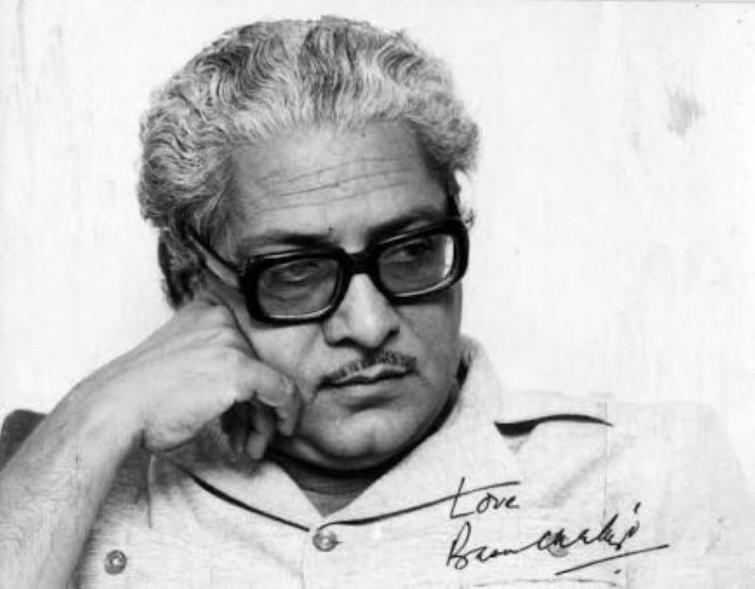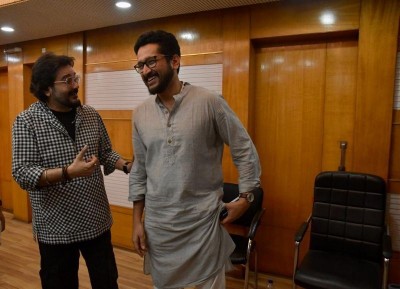 26th KIFF
26th KIFF
Special screening as a tribute to Basu Chatterjee at 26th KIFF
Kolkata/IBNS: Basu Chatterjee, the celebrated filmmaker who passed away at the age of 93, is being paid a tribute with a screening of Chhoti Si Baat.
He created ‘middle-of-the-road’ cinema. His plethora of films, with their straightforward, simple stories about ordinary men and women negotiating their ways through the ups and downs in life and relationships with subtle touches of humour, satire, beautiful music and understated romance. His films mark a distinct genre in unpretentious family entertainment.
Beginning with Sara Akaash (1969), peaking with Rajanigandha (1974) and sustained through Chit Chor (1978), acquiring a critical tone with Ek Ruka Hua Faisla (1986), Sheesha (1986) and Kamla Ki Maut (1989). Till he was reaching his late 80s, Chatterjee remained as young, as energetic and as inspiring as he was as a young man.
He also gave us two extremely successful TV serials in the shape of Bomkesh Bakshi and Rajani which made the actors, television stars overnight.
Chatterjee introduced a completely new genre of cinema that did not exist before. It is labelled “middle of the road” cinema which, however, is a rather homogenised description of his kind of cinema. Because, it reached far beyond this labelling.
“Middle-of-the-Road” was elaborated upon as “wholesome family entertainment” that provided powerful story-based entertainment for the entire family. But these descriptions are an over-simplification of a creative artist that just skims the surface of his cinema and does not go deeper.
When he debuted with Sara Akash, he not only announced the arrival of a new kind of cinema, rooted in the regular lives of ordinary people, he also etched 1969 as the year that marked the beginning of the Indian New Wave.
Together with Mani Kaul’s Uski Roti and Mrinal Sen’s Bhuvan Shome, Sara Akash took Indian films to the next level, taking a close look at the conflicts, aspirations, emotions and relationships of people who were next door, not larger than life.
Chhoti Si Baat takes us on a nostalgic trip to Bombay (1975) of the mid-Seventies with a simple, straightforward look when the hero, heroine and the third angle of the triangle found a public bus stop as the centre stage for the unfolding of a sweet love story between two very ordinary, middle-class characters, a time when a scooter or a motor-cycle was a status symbol for young men vying for attention for a young lady who worked in an office close by.
Arun Pradip (Amol Palekar) is madly in love with Prabha (Vidya Sinha) who he meets at the bus stop both wait in order to go to their respective offices. But he is too shy, diffident and timid to approach Prabha. He lives in a dual world of fantasy where he imagines a love story that does not exist and the real world where he watches another over-smart man (Asrani) trying to beat him to get the girl. Ashok Kumar plays a delightful supporting role.
Hema Malini and Dharmendra appear in a song sequence while Amitabh Bachchan appears as himself in a blink-and-you-miss-him scene. The bus stop carries the poster of Zameer which means “conscience”, both a metaphor for the protagonist Arun as well as a free ad for the producer B.R. Chopra who produced both films.
Many years later, the film still offers a delightful watch and an insight into Chatterjee’s ability to seek out plots which the middle-class audience can happily identify with.
(Reporting by Shoma A. Chatterji)
Support Our Journalism
We cannot do without you.. your contribution supports unbiased journalism
IBNS is not driven by any ism- not wokeism, not racism, not skewed secularism, not hyper right-wing or left liberal ideals, nor by any hardline religious beliefs or hyper nationalism. We want to serve you good old objective news, as they are. We do not judge or preach. We let people decide for themselves. We only try to present factual and well-sourced news.





